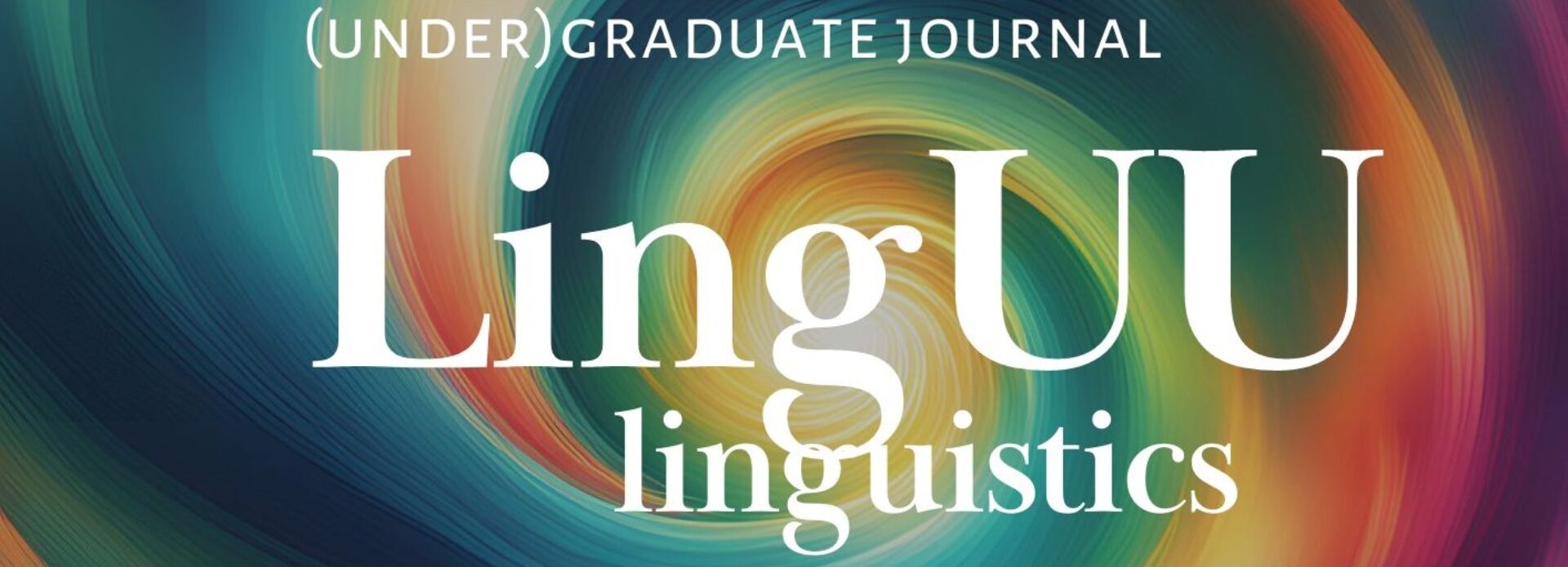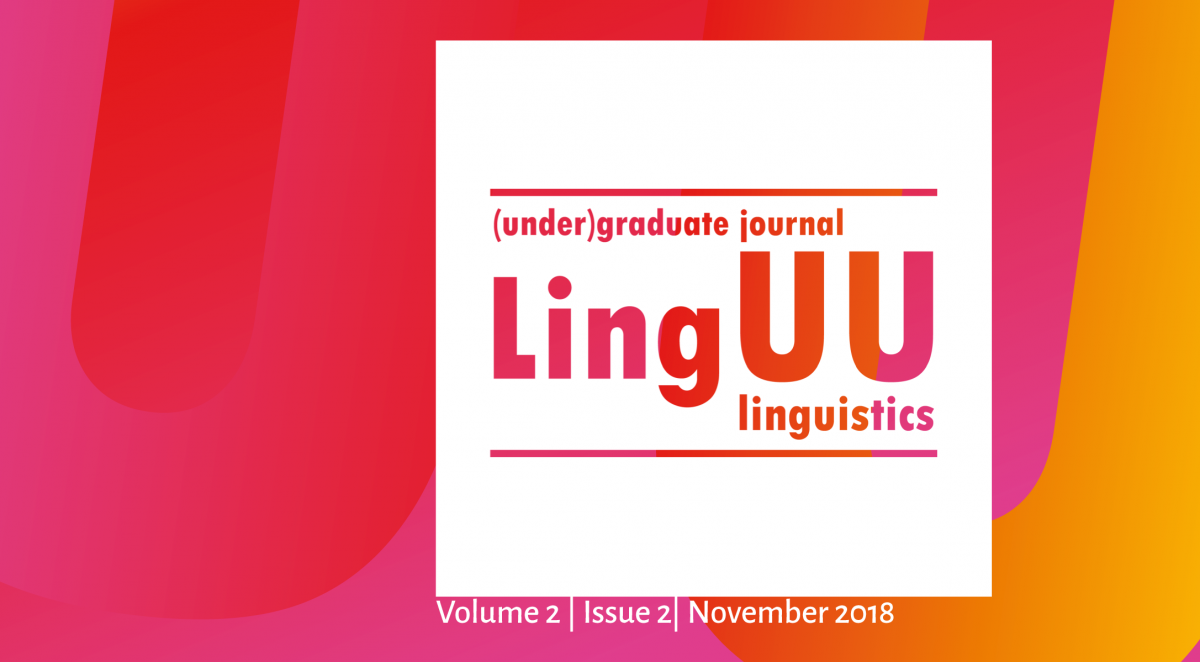LingUU 2.2 is out now! The third issue of LingUU Journal features articles on various linguistic topics, written by students from different BA and MA programmes. Download the entire issue, browse through the contents, or order a paper copy (while supplies last).
Merel Hardeman, Héloïse Pierret & Anouk Scheffer (RMA Linguistics) compare two models of spoken word recognition: the Cohort model and the TRACE model. Their results indicate that priming with a matching rhyme results in faster response times to the target word than priming with a matching onset and nucleus. This is in line with the TRACE model.
Through a linguistic lens, Lisa Verbeek (RMA Linguistics) examines the emotional perception of self-names. She argues that self-names become Emotionally Competent Stimuli, such that affective memory traces have become part of word meaning, making self-names highly arousing words that are processed automatically and unconsciously.
Marlijne Boumeester (MSc Neuroscience and Cognition) proposes a study that questions bilingualism as a potential factor to delay age-related cognitive decline. She expects that the performance on the Simon task and the trail-making task will decline to the same extent in two age groups of monolinguals and bilinguals.
In a corpus study of Early Modern Dutch, Levi Remijnse (RMA Linguistics) analyses non-finite clauses headed by a present participle. Some constituents – prohibited from extraposition or raising – are located after this present participle. To account for this, Remijnse proposes that the present participle itself projects an extra projection containing a left-branching node (XP).
Bjorn Lichtenberg (BA Linguistics) reviews three models of force dynamicity. He compares their definition of force, their empirical coverage and their validity with respect to compositionality. According to Lichtenberg, Wolff’s model has the most expressional power, while the model by Copley and Harley is preferred in the light of compositionality.
Camilla Giannini (RMA Linguistics) investigates the the status of Occitan, a minority language in Italy, focusing on the development of this language, and on language planning and contemporary media as a way of maintenance. Giannini concludes that the desire of the speakers to promote their culture and traditions is still strong.
In this replication study, Tamara Muller, Lucia Koster & Ellen Hendriks (MA Communication and organisation) find more evidence for the conceptual metaphor theory. Participants rely on metaphors when they judge newspapers, expecting that heavier newspapers contain more important news. However, no evidence for grounded cognition was found.
Dylan Bonga and Jonathan Kamp (RMA Linguistics) examine the interaction between phonological and graphemical priming. They hypothesize that phonological and graphemic priming combined is stronger than only one type of priming. Using using a Lexical Decision Task, they could partly confirm this prediction.
Jaap Kruijt (MSc Artificial Intelligence) reports on his time in Edinburgh. A course on language evolution countered ideas he had encountered before. Using a method that he learned about in Edinburgh, he wrote his thesis on this topic.
Walther Glödstaf (RMA Linguistics) finds that Steven Pinker’s The Stuff of Thought makes a convincing case for the use of semantics in understanding the human mind. He regrets the occasional oversimplificiations and straw mans, but appreciates Pinker’s witty display of knowledge.
Myrthe Buckens (BA Linguistics) concludes that Taal om mee te spelen by Sjoerd van der Niet is best considered as a light-hearted introduction to language philosophy, intended for the general public.



